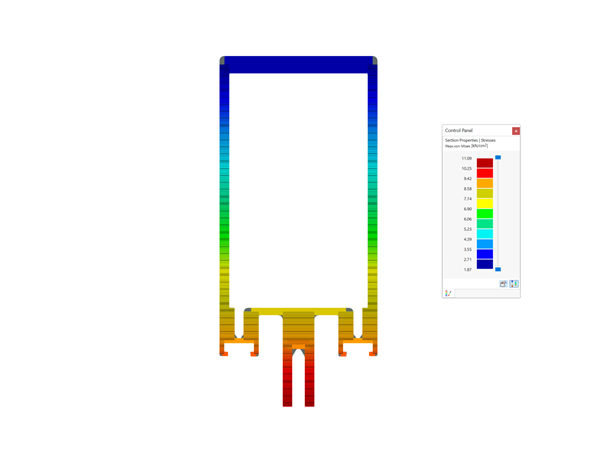If the flanges are not continuous and the diagonals are fastened to the flanges, it may be necessary to enter an intermediate member.
Image 01 shows a structural system where the flange is not continuous, but the diagonals are rigidly connected to the flange. To transfer the moments of the diagonals to the flange, the diagonal must arrive at the flange before the joint, otherwise the moment of the diagonal will be transferred to the opposite member (see Image 02).
If the diagonals are also connected by hinges, you can dispense with the intermediate member. Please note that at least one member will not be hinged in order to prevent the connection node from rotating freely (see Image 03).
When using a vertical, it must be connected on one of the two flanges or be between both flanges. In both cases, you can use the model from Image 01 and modify it accordingly. Image 04 shows the model with the vertical between the flanges, and Image 05 shows the model with the vertical on the right flange.
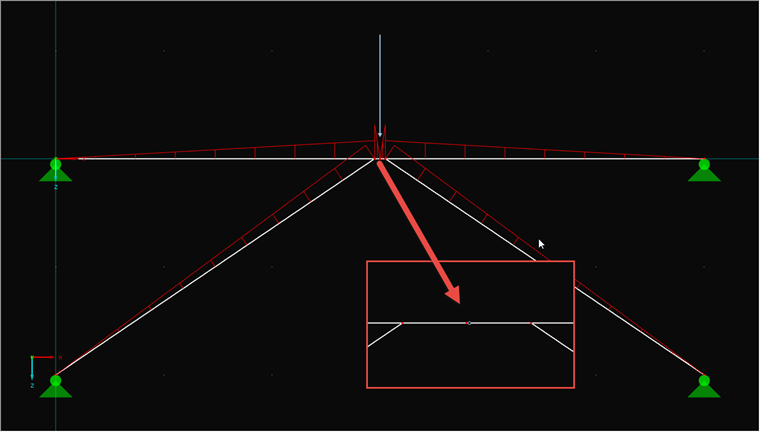
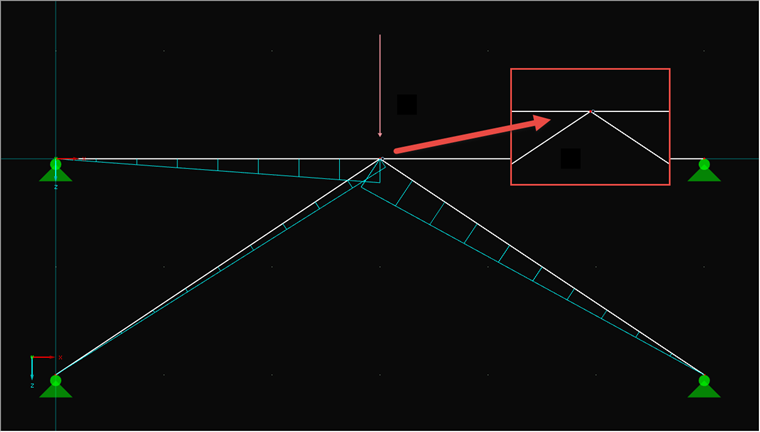
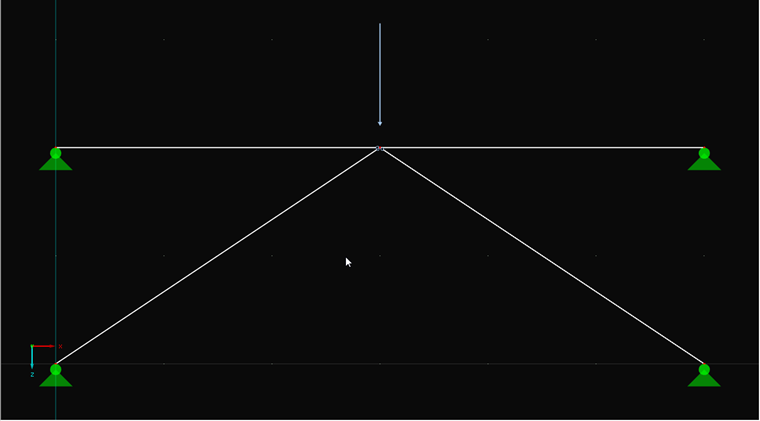
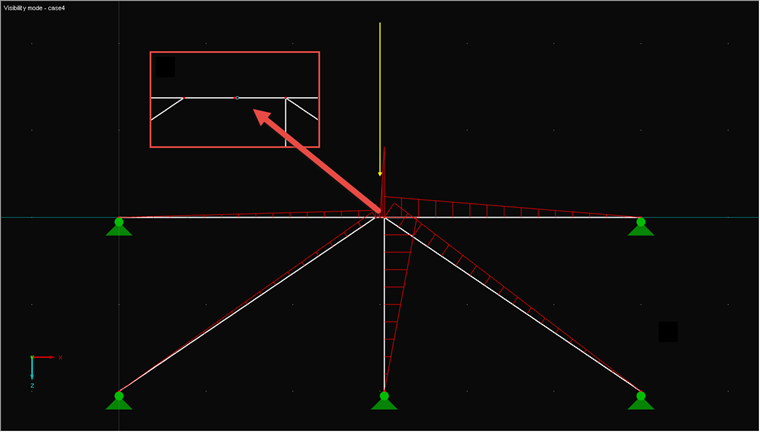
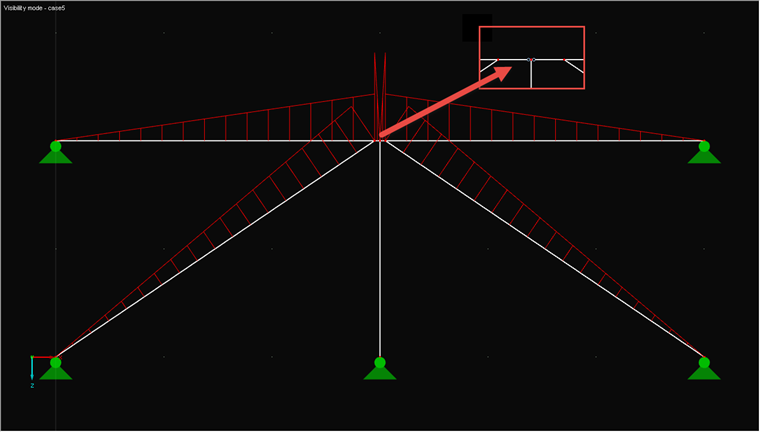
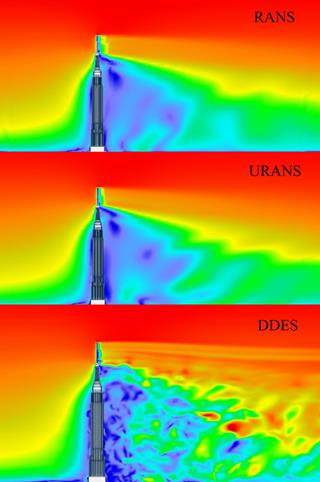


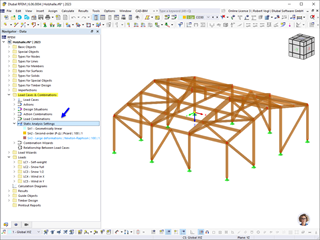






























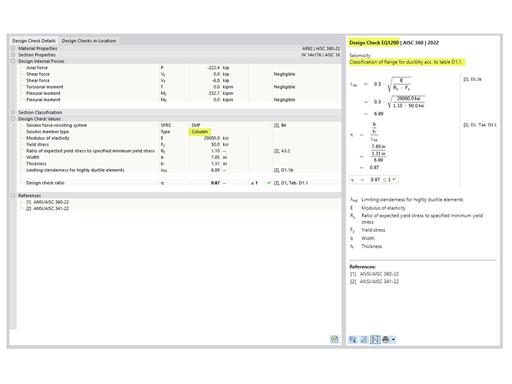
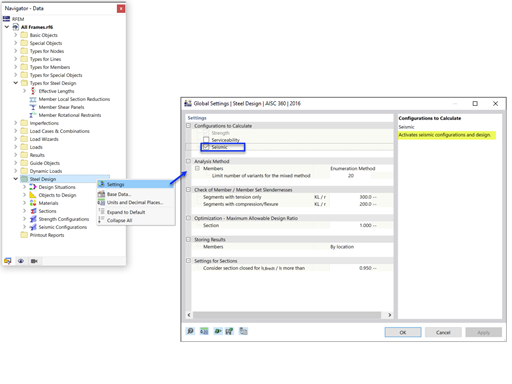
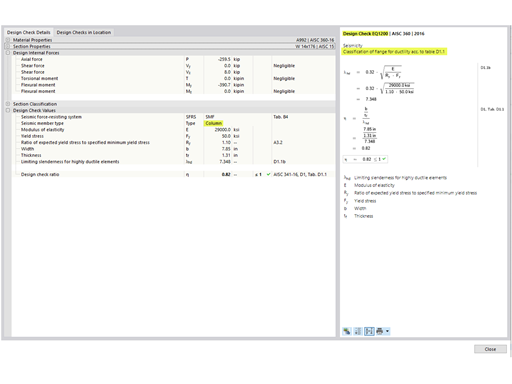
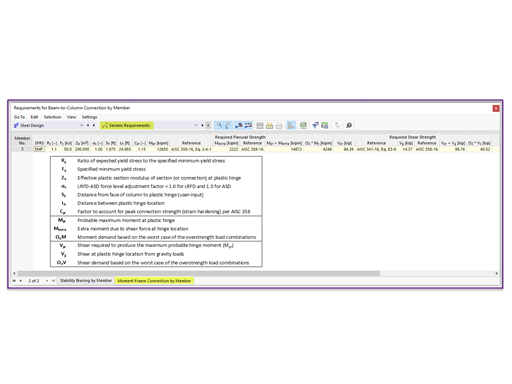







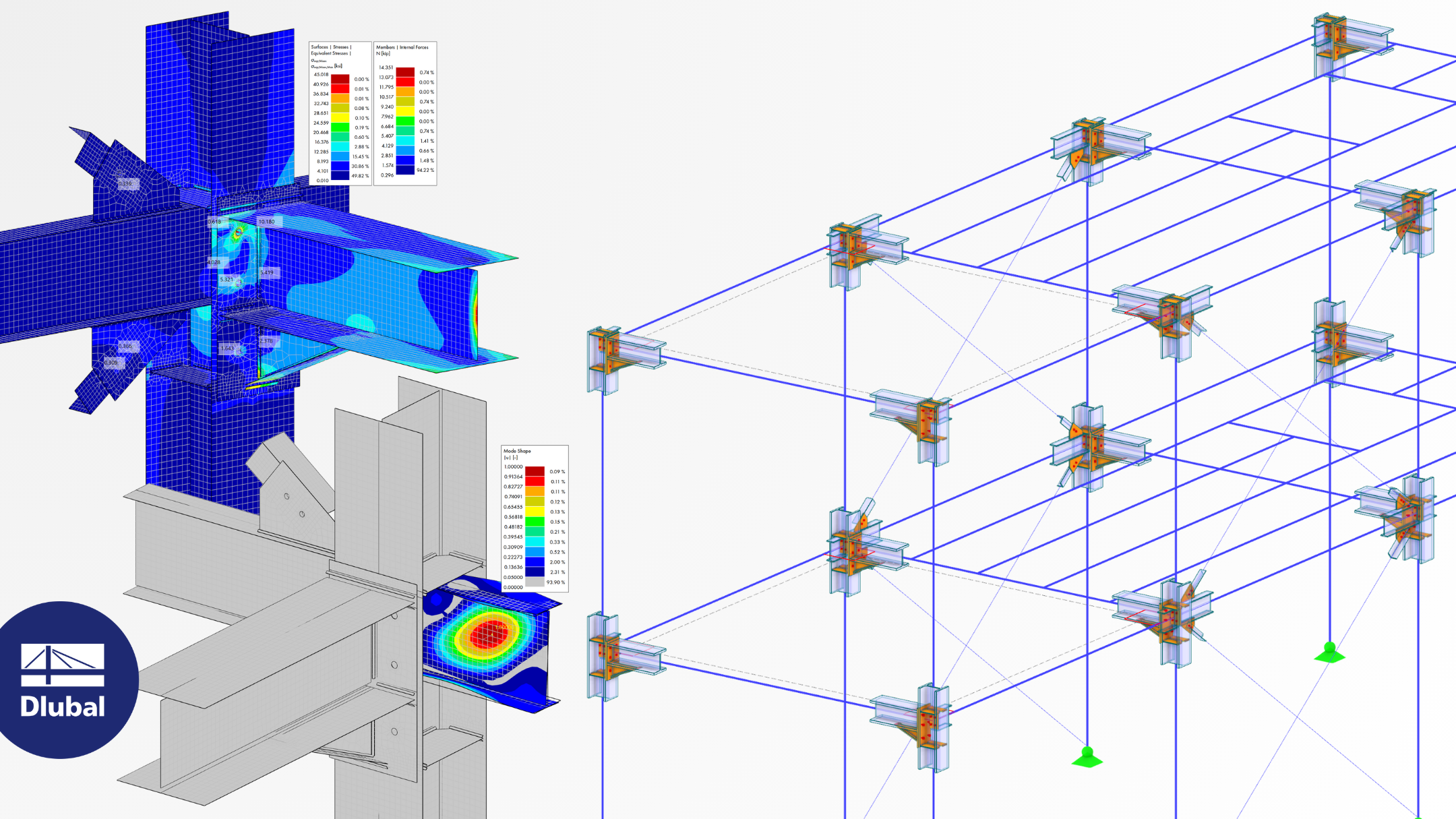.png?mw=350&hash=b2324c4db119938012b5490afaa56e9aa826cdcc)




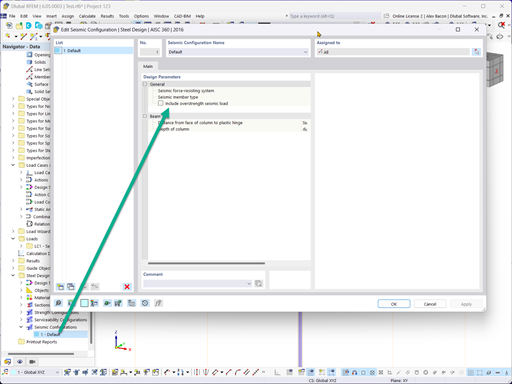








.png?mw=600&hash=49b6a289915d28aa461360f7308b092631b1446e)












